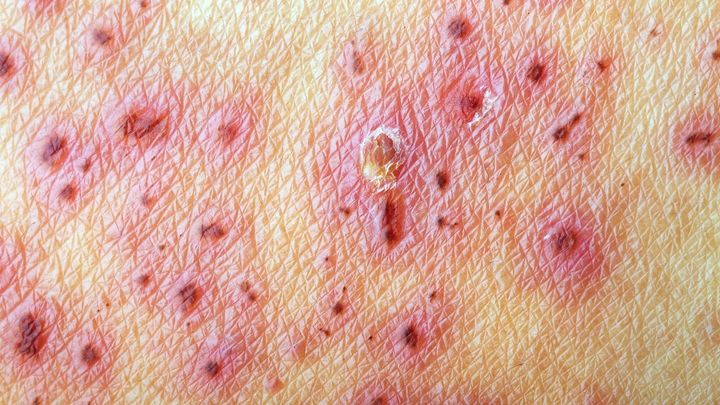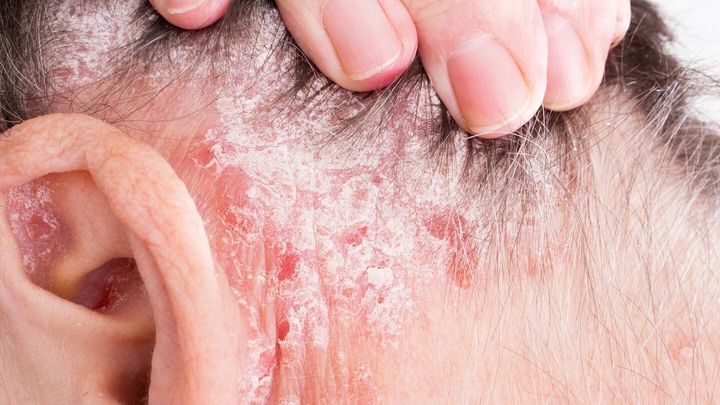What is shingles?
The same virus that causes chickenpox causes shingles. It’s called the varicella zoster virus (VZV).
VZV stays dormant in your body even after you recover from chickenpox. The chickenpox virus can reactivate years or even decades later, but it’s not understood why.
When this happens, a person will develop shingles. Recognizing the early symptoms is important because it can be a painful condition with severe complications.
Can anyone develop shingles?
Anyone who has had chickenpox can develop shingles. The Centers for Disease Control and Prevention (CDC) state that almost 1 in 3 people in the US will develop shingles in their lifetime. But some people are more likely to develop shingles than others.
It is estimated that half of all cases of shingles occur in people aged 60 years and older.
Other groups prone to developing shingles include:
- people with HIV
- people undergoing cancer treatments
- people who have had organ transplants
- people experiencing a lot of stress
The first symptoms of shingles
Early symptoms of shingles can appear several days before the more obvious symptoms. However, some people will not have early symptoms before a rash appears.
The most common early symptoms occur on one part of the body or face. This often happens in the abdominal area.
These symptoms many include:
- numbness
- itching
- tingling
- burning pain
The pain can worsen as shingles develops. The pain can be sharp, stabbing, and intense.
It may also cause hypersensitivity, or an excessive reaction to touch.
There are also other early symptoms of shingles.
Other early symptoms of shingles
Although not every person with shingles will experience them, early symptoms include:
- tiredness
- aching muscles
- headaches
- nausea
- general feeling of being unwell
- fever
Your doctor can often diagnose shingles based on these symptoms. Your doctor may prescribe medication to speed up recovery.
Medication also reduces the chance of complications, so seeking early intervention is important.
What shingles symptoms come next?
After about 1 to 5 days, a shingles rash will appear on one side of the body, often in a single characteristic band around one side of the torso or face.
The painful rash will then form itchy or burning blister-like sores filled with a clear fluid. The blisters will scab over in 7 to 10 days. They’ll gradually grow smaller before disappearing.
Shingles rash symptoms commonly last between 2 to 4 weeks.
What treatments are there for shingles?
Call your doctor as soon as you suspect shingles so you can begin treatment as early as possible.
Antiviral drugs such as acyclovir (Zovirax), valacyclovir (Valtrex), or famciclovir (Famvir) can make symptoms less severe and shorten the length of the illness if taken early.
Pain relievers can often lessen discomfort during a more advanced stage.
Wet compresses, calamine lotion, and colloidal oatmeal baths can also be helpful to reduce itching.
Am I contagious if I have shingles?
Shingles cannot be passed from one person to another. But someone who has never had chickenpox can contract VZV from a person with active shingles. They would then develop chickenpox, not shingles.
Only direct contact with fluid from shingles blisters can transmit the virus. Keep shingles blisters covered with a fluid absorbent dressing to prevent others from contracting the virus.
What are the health complications?
The most common complication of shingles is postherpetic neuralgia (PHN). PHN causes severe pain even after the shingles rash clears.
People aged 60 years and older who don’t seek treatment for shingles are more likely to develop PHN.
Shingles can also cause serious sight problems if it infects the structures of the eye.
Other rare complications include:
- pneumonia
- hearing problems
- brain inflammation
In such cases, shingles can be fatal.
Life after shingles
If health complications such as PHN develop due to shingles, further treatment is necessary.
Treatment for PHN can last months, years, or may require lifelong medical care.
If you don’t experience any complications while you have shingles, you can usually expect to make a full recovery.
However, recent studies show that shingles recurrence is higher than believed. About 8% of cases recur.
Fortunately, you can take proactive steps to prevent attacks in children and seniors.
Prevention is better than treatment
Childhood immunizations routinely include a varicella vaccine to prevent chickenpox. The vaccine also helps to reduce the number of people who develop shingles later in life.
The CDC recommends vaccination if you’re a healthy adult 50 years and older and whether you had chickenpox.
In 2017, the Food and Drug Administration (FDA) approved a new shingles vaccine called Shingrix (recombinant zoster vaccine). The vaccine requires two doses 2 to 6 months apart and provides strong protection against shingles and PHN.
Shingrix is preferred over the previous vaccine, Zostavax, which has been in use since 2006 in those 60 years and older.
Even seniors who have had a recent case of shingles can still receive the vaccine.





